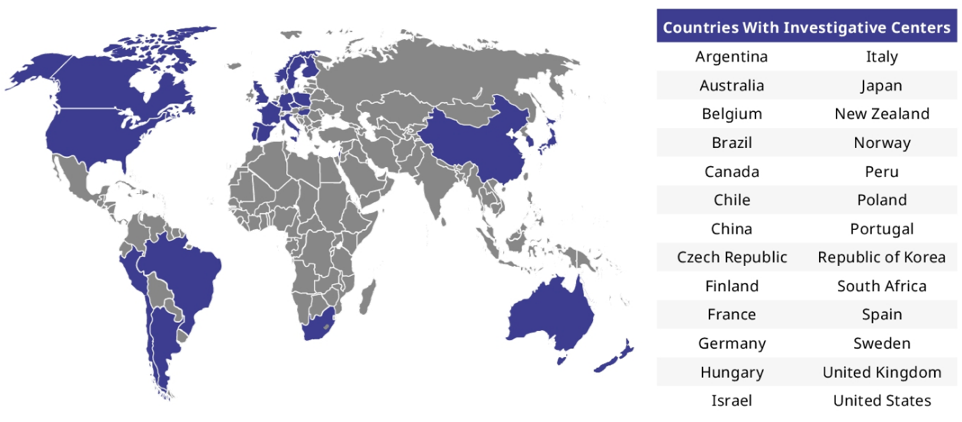At the American Society of Clinical Oncology (ASCO) 2021 Annual Meeting, Dr. Neeraj Agarwal discussed the TALAPRO-2 trial, a phase 3, two-part study evaluating the efficacy, safety, pharmacokinetics, and patient-reported outcomes (PROs) of talazoparib plus enzalutamide in patients with mCRPC with or without DNA damage repair alterations.
The enrollment goal for this study is 1,037 patients (19 patients for part 1 dose-finding is complete; 1,018 patients for part 2 placebo-controlled is ongoing; accrual is completed in the unselected cohort). Key eligibility criteria include:
- Age ≥18 years
- Asymptomatic/mildly symptomatic mCRPC
- ECOG performance status ≤1
- Metastatic disease (no brain metastases)
- No prior life-prolonging systemic therapy for nonmetastatic CRPC or mCRPC
- Prior therapies (excluding novel androgen receptors inhibitors) in the castration-sensitive (CSPC) setting are allowed
- ADT must continue throughout the study
The randomized double-blind portion (part 2) will evaluate safety, efficacy, and PROs of talazoparib (0.5 mg once daily) + enzalutamide (160 mg once daily) versus placebo + enzalutamide (160 mg QD). Patients are stratified by prior novel hormonal therapy or docetaxel for CSPC or mCSPC (yes or no) and DNA damage repair alteration status (deficient vs nondeficient/unknown). The trial design for TALAPRO-2 is as follows:

The primary endpoint is rPFS, defined as time to progression in soft tissue per RECIST v.1.1 or in bone per PCWG3 criteria by independent central review or death. The secondary endpoints are as follows:
- Overall survival
- Proportion of patients with measurable soft tissue disease at baseline with objective response per RECIST v.1.1
- Duration of soft tissue response
- Proportion of patients with PSA response >50
- Time to PSA progression
- Time to initiation of cytotoxic chemotherapy
- Time to initiation of antineoplastic therapy
- Time to first SSE
- PFS on second-line therapy
- Time to opiate use for prostate cancer pain
- Incidence of adverse events and symptomatic adverse events by type and severity
- PK characterized by pre-dose trough and post-dose plasma concentrations of talazoparib, enzalutamide, and its N-desmethyl metabolite
- PROs: using BPI-SF, EQ-5D-5L, EORTC QLQ-C30, and EORTC QLQ-PR25
Efficacy is assessed radiographically every 8 weeks up to Week 25 and every 8–12 weeks thereafter. rPFS will be compared between the two arms by a one-sided stratified log-rank test. Patient recruitment is ongoing at 223 sites in 26 countries, including 32 states across the US, and Europe, Israel, South America, South Africa, and the Asia-Pacific region:

Clinical trial information: NCT03395197
Presented by: Neeraj Agarwal, MD, Huntsman Cancer Institute at the University of Utah, Salt Lake City, UT
Written by: Zachary Klaassen, MD, MSc – Urologic Oncologist, Assistant Professor of Urology, Georgia Cancer Center, Augusta University/Medical College of Georgia Twitter: @zklaassen_md at the 2021 American Society of Clinical Oncology (ASCO) Annual Meeting, Virtual Annual Meeting #ASCO21, June, 4-8, 2021


